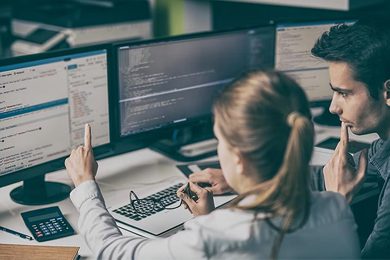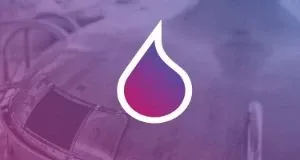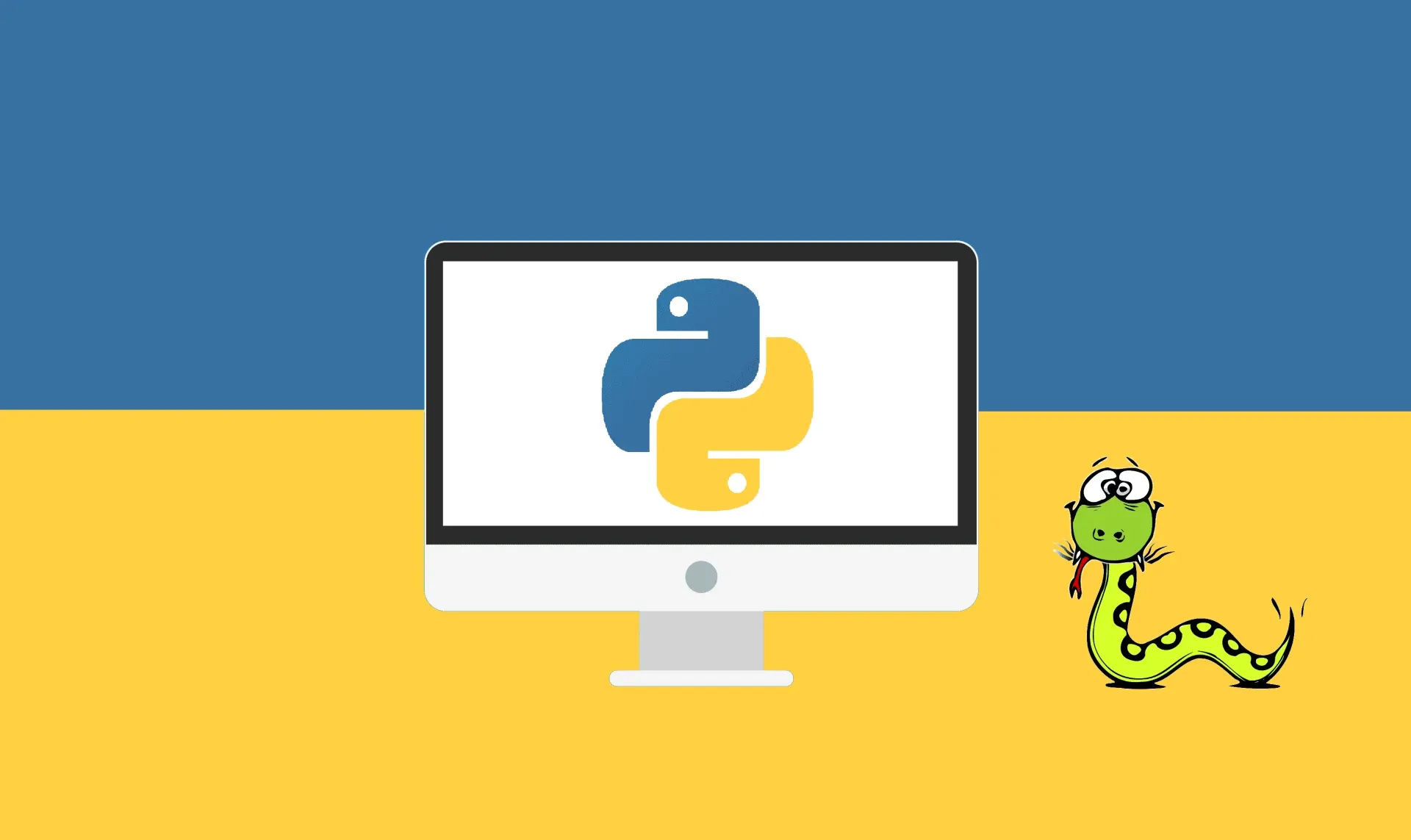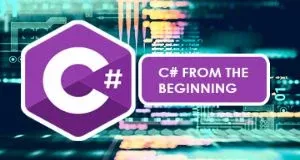This plan includes
- Limited free courses access
- Play & Pause Course Videos
- Video Recorded Lectures
- Learn on Mobile/PC/Tablet
- Quizzes and Real Projects
- Lifetime Course Certificate
- Email & Chat Support
What you'll learn?
- Learn Python from Zero to Hero.
- Fundamental understanding of the Python programming.
- Learn to use Python professionally, learning both Python 2 and Python 3.
- Learn advanced Python features, like collections, modules.
- Learning all the basic topics, like conditional statements, looping, advanced operators
- Understand how to use Data Structures, like Lists, Tuple, Set and Dictionary.
- Get an understanding of how to create GUIs.
- Developing 6 major projects including Face Recognition, Automate Weather Forecast and many such interesting projects.
- Learn how to use Object Oriented Programming with classes.
- Understand how to execute the .py programs with ATOM and Visual Studio.
- Course includes Python Cheat Sheet
Course Overview
Welcome to Python Programming Bootcamp. One single course to start your Python Journey as a Fresher Step by Step. This course touches on each and every important concept of Python with latest version of Python 3.7, Python 3.8, and Python 3.9.
Learn one of employer's most requested skills of 2021!
Throughout the course, we will explore the most important Python Programming Features -
-
Basics of Python - Expressions, Variables, and Input Output Statements
-
Operators - Assignment Operators, Relational and Logical Operators, Short Hand Operators
-
Conditional Statements - If Else Statement, Nested If Else
-
Methods - Parameters, Passing Arguments, and Return Values
-
Complete Object Oriented Programming - Classes and Objects
-
OOPs Features - Encapsulation, Inheritance, and Abstract Classes.
-
Data Structures In depth - List, Set, Dictionary, and Tuples
-
Loops - For Loop, While Loop, Keywords: Break and Continue
-
Mutability and Immutability of Python Basic Types.
-
Built-in And User Defined Modules
-
Errors And Exception Handling with try except block - try, except, else, and finally.
-
Custom Exception - Raising Exception, Creating, and Raising a Custom Exception.
-
Python 3 Cheat sheet
Here are some projects that we will explore:
-
Face recognition with OpenCV in Python
-
Data Analysis With Pandas
-
Graphical User Interface Application with Tkinter
-
Password Generator with Random Module
-
Understanding the basics of Databases and Integrating Desktop Application with SQLite3 Database.
-
Automate Weather Forecast
-
Automated Web Scraper and Mailing System with BeautifulSoup
So basically we will work on 6 different Projects With OpenCV, Pandas, Tkinter, BeautifulSoup & more.
The main goal of this course is to learn programming by building projects.
Pre-requisites
- Access to a computer with an internet connection.
Target Audience
- Beginners who have never programmed before.
- Programmers who are switching other programming languages to Python.
- Programmers who want to level up their skills.
Curriculum 172 Lectures 13:03:32
Section 1 : Python in 2021
- Lecture 2 :
- Welcome - Let's Get Started
Section 2 : Setup Installing Python
- Lecture 1 :
- Python Programming - Is Python A Bubble
- Lecture 2 :
- Installing Python on Windows
- Lecture 3 :
- Python 3.9 Version Update
- Lecture 4 :
- Different Methods To Execute Python Codes
Section 3 : Writing our 1st Python Program
- Lecture 1 :
- Variables and Python Memory Management
Section 4 : Datatypes in Python
- Lecture 1 :
- Datatypes in Python
- Lecture 2 :
- Sequences in Python
- Lecture 3 :
- Sets, Dictionary
- Lecture 4 :
- Literals and Identifiers
- Lecture 5 :
- Reserve Words - You Can't Use Them!
Section 5 : Operators in Python
- Lecture 1 :
- Operators Arithmetic, Assignment
- Lecture 2 :
- Operators Unary Minus, Relational, Logical, Boolean
- Lecture 3 :
- Understanding Escape Characters
Section 6 : Input and Output
- Lecture 1 :
- Introduction to Input and Output Statements
- Lecture 2 :
- Output Statements
- Lecture 3 :
- Input Statements
- Lecture 4 :
- Python Built-in Functions and Built-in Module
- Lecture 5 :
- Practice Questions
- Lecture 6 :
- Solutions for Practice Questions
Section 7 : Integrated Development Environment (IDE)
- Lecture 1 :
- Editor 1 - Working With ATOM
- Lecture 2 :
- Editor 2 - Working With VS Code
- Lecture 3 :
- Run .py file through System Terminal
Section 8 : Python Conditional Statements
- Lecture 1 :
- Conditionals If, If ... Else and Indentation
- Lecture 2 :
- Conditionals If ... Else Statements With Operators
- Lecture 3 :
- Conditionals if... elif ... else Statements, Nested if Statements
- Lecture 4 :
- Practice Questions
- Lecture 5 :
- Solutions for Practice Questions
Section 9 : Loops in Python
- Lecture 1 :
- While Loop
- Lecture 2 :
- For Loops - Part 1
- Lecture 3 :
- For Loops - Part 2
- Lecture 4 :
- Break and Continue Statements
- Lecture 5 :
- Practice Questions
- Lecture 6 :
- Solutions for Practice Questions
Section 10 : Strings and Characters
- Lecture 1 :
- Comments and Doc Strings
- Lecture 2 :
- Diving Deep With Strings
- Lecture 3 :
- Practice Questions
- Lecture 4 :
- Solutions for Practice Questions
Section 11 : Lists, Tuples, and Dictionary
- Lecture 1 :
- Diving Deep - List
- Lecture 2 :
- Diving Deep - Tuples
- Lecture 3 :
- Diving Deep - Dictionaries
- Lecture 4 :
- Indexing, Slicing, Negative Indexing
- Lecture 5 :
- Practice Questions
- Lecture 6 :
- Solutions for Practice Questions
Section 12 : Functions
- Lecture 1 :
- What are Functions
- Lecture 2 :
- Parameters, Arguments, Return
- Lecture 3 :
- Formal and Actual Arguments (arg, *arg, **karg)
- Lecture 4 :
- Local and Global Variables
- Lecture 5 :
- Practice Questions
- Lecture 6 :
- Solutions for Practice Questions
Section 13 : Object Oriented Programming (OOP)
- Lecture 1 :
- Introduction to Object Oriented Programming (OOP)
- Lecture 2 :
- Classes and Objects in Python (OOP)
- Lecture 3 :
- Understanding init() Method and _self _ Parameter
- Lecture 4 :
- Solving Task OOPS
- Lecture 5 :
- Defining Multiple Constructors in Python
- Lecture 6 :
- Encapsulation
- Lecture 7 :
- Public And Private Methods
- Lecture 8 :
- Inheritance
- Lecture 9 :
- Getter and Setter
- Lecture 10 :
- Creating And Importing Module
- Lecture 11 :
- Creating User Defined Module
- Lecture 12 :
- Multiple Inheritance
- Lecture 13 :
- Understanding super() Function [Part 1]
- Lecture 14 :
- Understanding super() Function [Part 2]
- Lecture 15 :
- Python Naming Convention (Classes, Variables, Functions, Methods ...)
- Lecture 16 :
- Composition
- Lecture 17 :
- Aggregation
- Lecture 18 :
- Abstract Classes
- Lecture 19 :
- Discussing Over import And from
- Lecture 20 :
- Operator Overloading [Part 1]
- Lecture 21 :
- Operator Overloading [Part 2]
- Lecture 22 :
- Practice Questions
- Lecture 23 :
- Solutions for Practice Questions
Section 14 : Object-Oriented Programming (Theory)
- Lecture 1 :
- What Is Object-Oriented Programming (OOP)
- Lecture 2 :
- Classes and Objects in Python (OOP)
- Lecture 3 :
- Encapsulation in Python (OOP)
- Lecture 4 :
- Inheritance in Python (OOP)
Section 15 : Errors and Exception Handling
- Lecture 1 :
- Errors - Types of Errors!
- Lecture 2 :
- Exceptions
- Lecture 3 :
- Exceptions Handling Introduction
- Lecture 4 :
- Exceptions Handling
- Lecture 5 :
- Try, Except, Else And Finally
- Lecture 6 :
- Raising Exception
- Lecture 7 :
- Creating User Defined Exception
- Lecture 8 :
- Practice Questions
- Lecture 9 :
- Solutions for Practice Questions
Section 16 : if __name__ == __main__
- Lecture 1 :
- if __name__ == __main__
Section 17 : Python I-O - File Handling
- Lecture 1 :
- Creating Text File And Write Content
- Lecture 2 :
- Appending Files - 1 Solving Example - File Handling
- Lecture 3 :
- Appending Files - 2 Solving Example - File Handling
- Lecture 4 :
- How To Read Content From A File
- Lecture 5 :
- Practice Questions
- Lecture 6 :
- Solutions for Practice Questions
Section 18 : Python Package Management System
- Lecture 1 :
- pip - PyPI for Managing Python packages
Section 19 : PROJECT-1 _ Face Detection
- Lecture 1 :
- What is OpenCV
- Lecture 2 :
- OpenCV Face Detection With Python
- Lecture 3 :
- Detecting _Elon Musk_ And _Mark Zuckerberg_ Faces
- Lecture 4 :
- Detecting Faces Of All Images In The Folder
Section 20 : PROJECT-2 _ Password Generator
- Lecture 1 :
- Random Module
- Lecture 2 :
- Random Password Generator
- Lecture 3 :
- Readable Password Generator
Section 21 : PROJECT-3 _ Data Analysis With Pandas
- Lecture 1 :
- What is Pandas
- Lecture 2 :
- Starting With Pandas And iPython
- Lecture 3 :
- Working with Jupyter Notebooks
- Lecture 4 :
- Important Jupyter Notebook Commands
- Lecture 5 :
- Working with CSV, Excel, TXT and JSON Files
- Lecture 6 :
- Working with CSV, Excel, TXT and JSON Files
- Lecture 7 :
- Working with API Response
- Lecture 8 :
- Indexing and Slicing Dataframe Tables [Part 1]
- Lecture 9 :
- Indexing and Slicing Dataframe Tables [Part 2]
- Lecture 10 :
- Deleting Columns and Rows
- Lecture 11 :
- Adding and Updating new Columns and Rows
Section 22 : PROJECT-4.1 _ Building GUI Portfolio APP with TKinter
- Lecture 1 :
- GUI Introduction - Graphical User Interface
- Lecture 2 :
- Understanding 3 Steps Tkinter Working
- Lecture 3 :
- Tkinter Main Window and Labels
- Lecture 4 :
- Application Formatting - Adding Header
- Lecture 5 :
- Application Formatting - Adding More Data
- Lecture 6 :
- Application Formatting - Improving User Interface
- Lecture 7 :
- Color Indication For Profit and Loss
- Lecture 8 :
- Adding Update Button
- Lecture 9 :
- Creating Executable App (.exe file)
Section 23 : PROJECT-4.2 _ Understanding Database Basics (SQLite3)
- Lecture 1 :
- Databases - SQL vs SQLite3
- Lecture 2 :
- Introduction to SQLite3 and its Workings
- Lecture 3 :
- Creating Table Working with DB Browser
- Lecture 4 :
- Insert Values - Databases
- Lecture 5 :
- Update Values - Databases
- Lecture 6 :
- Fetching Data From Database
- Lecture 7 :
- Delete Data - Database
- Lecture 8 :
- Creating Functions For Operation - Database
Section 24 : PROJECT-4.3 _ TKinter GUI Application with SQLite3 Database
- Lecture 1 :
- Connecting With Database
- Lecture 2 :
- Fetching Data From Database
- Lecture 3 :
- Modifying Current Application
- Lecture 4 :
- Adding Add Coin Button
- Lecture 5 :
- Adding Update Coin - Delete Coin Button
- Lecture 6 :
- Solving Multiple Layer Issue
- Lecture 7 :
- Adding Notification System - Popup Box
- Lecture 8 :
- Adding Navigation System - Menu Bar
Section 25 : PROJECT-5 _ Building Web Scrapping Bot With Python
- Lecture 1 :
- Project Introduction - Web Scraping Bot
- Lecture 2 :
- Project Demo - Web Scraping Bot
- Lecture 3 :
- How Do We Scrape Data
- Lecture 4 :
- Web Scraping - Overview
- Lecture 5 :
- Project Setup and Installing Libraries
- Lecture 6 :
- Working With BeautifulSoup
- Lecture 7 :
- Filtering Required Data
- Lecture 8 :
- Extracting Current Price
- Lecture 9 :
- Extracting Table Content - I
- Lecture 10 :
- Extracting Table Content - II
- Lecture 11 :
- Extracting All Stock Result
- Lecture 12 :
- Working with Static File
- Lecture 13 :
- Storing Stock Content in CSV File
- Lecture 14 :
- Sending Text Mail Through SMTPLIB
- Lecture 15 :
- Sending Text Mail Through Email Module
- Lecture 16 :
- Sending Attachment Through Email Module
- Lecture 17 :
- Integrating Mail System with Web Scraper
- Lecture 18 :
- File Name According To Today's Date
Section 26 : PROJECT-6 _ Automate Weather Forecast
- Lecture 1 :
- Project Introduction
- Lecture 2 :
- OpenWeatherMap API
- Lecture 3 :
- Working With API Data
- Lecture 4 :
- Working With Pillow Library
- Lecture 5 :
- Adding Content Date and Time
- Lecture 6 :
- Adding Content Multiple City Position
- Lecture 7 :
- Adding Content Multiple City Data
- Lecture 8 :
- Adding Content Multiple Country Data
- Lecture 9 :
- Saving Post as PNG and PDF
- Lecture 10 :
- Exercise Automate For Stories
Section 27 : Need to Know _ What_s New Python 3.8 _
- Lecture 1 :
- 3 Updates Python 3.8
Section 28 : Need to Know _ What_s New With Python 3.9 _
- Lecture 1 :
- Union Operators
- Lecture 2 :
- Type Hinting
- Lecture 3 :
- New String Class Methods
- Lecture 4 :
- Native Time Support (Zoneinfo)
Section 29 : Python Cheat Sheet
- Lecture 1 :
- Python Cheat Sheet
Our learners work at
Frequently Asked Questions
How do i access the course after purchase?
It's simple. When you sign up, you'll immediately have unlimited viewing of thousands of expert courses, paths to guide your learning, tools to measure your skills and hands-on resources like exercise files. There’s no limit on what you can learn and you can cancel at any time.Are these video based online self-learning courses?
Yes. All of the courses comes with online video based lectures created by certified instructors. Instructors have crafted these courses with a blend of high quality interactive videos, lectures, quizzes & real world projects to give you an indepth knowledge about the topic.Can i play & pause the course as per my convenience?
Yes absolutely & thats one of the advantage of self-paced courses. You can anytime pause or resume the course & come back & forth from one lecture to another lecture, play the videos mulitple times & so on.How do i contact the instructor for any doubts or questions?
Most of these courses have general questions & answers already covered within the course lectures. However, if you need any further help from the instructor, you can use the inbuilt Chat with Instructor option to send a message to an instructor & they will reply you within 24 hours. You can ask as many questions as you want.Do i need a pc to access the course or can i do it on mobile & tablet as well?
Brilliant question? Isn't it? You can access the courses on any device like PC, Mobile, Tablet & even on a smart tv. For mobile & a tablet you can download the Learnfly android or an iOS app. If mobile app is not available in your country, you can access the course directly by visting our website, its fully mobile friendly.Do i get any certificate for the courses?
Yes. Once you complete any course on our platform along with provided assessments by the instructor, you will be eligble to get certificate of course completion.
For how long can i access my course on the platform?
You require an active subscription to access courses on our platform. If your subscription is active, you can access any course on our platform with no restrictions.Is there any free trial?
Currently, we do not offer any free trial.Can i cancel anytime?
Yes, you can cancel your subscription at any time. Your subscription will auto-renew until you cancel, but why would you want to?
Instructor

1015 Course Views
1 Courses



 Tech & IT
Tech & IT
 Business
Business
 Coding & Developer
Coding & Developer
 Finance & Accounting
Finance & Accounting
 Academics
Academics
 Office Applications
Office Applications
 Art & Design
Art & Design
 Marketing
Marketing
 Health & Wellness
Health & Wellness
 Sounds & Music
Sounds & Music
 Lifestyle
Lifestyle
 Photography
Photography




.jpg)












